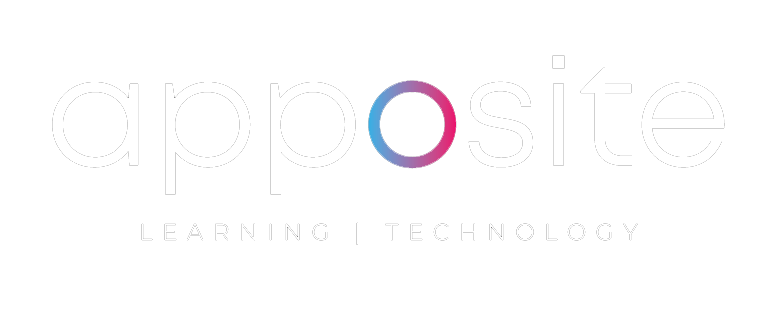About the Author: Kavitha Ravipati is a seasoned professional in learning consulting and instructional systems and solution design, with over 23 years of experience transforming the way people learn. A former Microsoft learning expert who played a pivotal role in developing the Microsoft Official Curriculum, Kavitha is now the Founder and Director of Apposite Learning Solutions. She is passionate about redefining learning experiences globally, creating innovative, learner-centric solutions that empower individuals and elevate organizational success.
Introduction
As a learning consultant with over 23 years of experience in learning consulting and instructional systems and solution design, I adhere to one fundamental principle: the learner must be at the center of every decision. This learner-centric approach isn’t just a trendy concept; it’s the cornerstone of creating impactful learning experiences.
Throughout my career, I’ve consistently found that effective learning design thrives when the learner is at the heart of the process. By focusing on the learner’s needs, motivations, and preferences, we can create learning solutions that not only convey information but also engage and inspire. This approach leads to better outcomes for both employees and organizations.
In this blog, I’ll be covering the principles of learner-centric design and development, along with specific insights from my work on the Microsoft Official Curriculum as an example. This example will demonstrate how the tenets of learner-centricity have been implemented in the design and development of Microsoft’s official learning materials.
Analysis
In my opinion, learner analysis is the first and most crucial step in the development of a learning solution. Understanding the learner begins with asking key questions that guide the creation of learning solutions uniquely tailored to their needs.
Who is my learner? To develop effective learning solutions, it’s essential to understand the learner’s background, motivations, and potential challenges. By considering demographics, professional background, and personal motivations, you can gain deep insights into their needs and create personalized solutions that truly resonate with them.
What are my learner’s specific needs and goals? A deep understanding of the learner’s exact needs and objectives is critical to developing targeted learning solutions. This understanding helps in addressing unique challenges and ensuring that the solution aligns with what the learner aims to achieve.
What is my learner’s context? The learner’s work environment, time constraints, and access to technology are vital contextual factors that influence how effectively they can engage with and apply the learning. By deeply understanding these contextual factors, you can design “apposite” learning solutions that are practical, relevant, and effectively address their needs.
How does my learner prefer to learn? Identifying preferred learning styles is crucial in creating engaging and effective solutions. This allows for the design of innovative solutions that resonate with the learner and enhance their overall experience.
To analyze learners effectively, I utilize a range of tools and techniques, including surveys, focus group sessions, and interviews, which provide both quantitative and qualitative insights into learners’ existing skills and knowledge, their needs and objectives, preferences, and challenges. Additionally, I develop detailed learner personas and use empathy mapping and journey mapping to visualize learners’ thoughts, feelings, and learning experiences, ensuring that solutions are personalized and impactful. Observational studies further enhance understanding by allowing direct observation of learners in their work environments, helping me identify real-world applications and barriers to learning. This comprehensive approach ensures that the learning solutions are both relevant and aligned with organizational goals.
Example: Learner at the Core: How Microsoft Profiles its Audience
Microsoft’s approach to developing its Official Curriculum is a prime example of learner-centric design. During the learner analysis phase, detailed learner personas are created for each product. For each persona, detailed task analysis is performed to identify the prerequisite skills and knowledge, the necessary skills and knowledge, and the learners’ work environments and contexts. For instance, several personas for Microsoft Azure can be identified such as IT professionals transitioning from on-premises to cloud environments, recent graduates entering cloud roles, and experienced administrators expanding their skill sets. Considering these personas and performing a detailed analysis for each persona ensures that the learning solutions are finely tuned to meet the diverse needs of different learner groups.
Design- The learner driven process
In the learning design process, every decision must prioritize the learner’s perspective and needs. As mentioned earlier, I begin by thoroughly understanding the learner through extensive research and diagnostic tools. This foundational knowledge drives an iterative design process, where learning solutions are continuously validated and refined based on learner feedback to ensure they align with the learner’s requirements.
The learning solutions I design revolve around the principle of “Learn, Practice, and Perfect,” ensuring that learners not only acquire new knowledge and skills but also have ample opportunities to apply and refine them. This approach is carefully structured to guide the learner through a comprehensive learning journey.
Initially, I determine the appropriate form factor for the learning solution based on the insights gained from the learner analysis. This lays the groundwork for designing the subsequent elements that facilitate the “Learn, Practice, and Perfect” progression.
In the “Learn” phase, I organize the content to follow the learner’s natural journey, with each section building upon the previous one. This creates a cohesive and logical learning experience. Visually, I incorporate elements that match the learner’s preferences, such as interactive features, appropriate graphics, media, and layouts, all aimed at enhancing comprehension and retention.
Transitioning to the “Practice” phase, I carefully craft design elements that utilize real-world examples and scenarios resonating with the learner’s context. These practice-oriented components are designed based on the specific skills the learner is expected to master and the context in which they are expected to apply them.
Finally, in the “Perfect” stage, I design opportunities for learners to independently apply the skills they have practiced, allowing them to learn from their own mistakes and further refine their abilities. This hands-on application in authentic environments solidifies the learner’s mastery of the subject matter.
Throughout this iterative design process, I maintain a steadfast focus on the learner’s needs, preferences, and work contexts, ensuring the learning solutions are truly tailored to their requirements and enable them to achieve their desired outcomes.
Example: Learner-Centric by Design: Microsoft’s Curriculum Framework
In the Design phase of the Microsoft Official Curriculum, the instructional design team closely collaborates with subject matter experts (SMEs) – the individuals who are expert implementers of the technology in real-world scenarios. Together, they expand upon the skills and knowledge identified during the comprehensive Learner Analysis phase.
Guided by the learner personas and journeys established earlier, the team creates a detailed course outline that thoughtfully considers the learner’s progression. This structural foundation sets the stage for the subsequent content and activity design.
When designing the “Learn” components, the instructional designers employ both micro and macro strategies to optimize the content presentation. They meticulously craft the learning materials to align with the learner’s natural progression, ensuring a coherent and logical journey. This includes incorporating interactive elements, multimedia, and structured learning paths to enhance comprehension and retention.
Transitioning to the “Practice” phase, the designers create hands-on practice opportunities and evaluation environments that simulate real-world scenarios. These practice-oriented elements are carefully constructed to mirror the learners’ authentic work contexts, enabling them to apply their newfound knowledge and skills in realistic settings. This may involve the use of cloud-based virtual labs, interactive simulations, and other immersive practice sessions.
Underpinning this entire design process is the guiding principle of “Learn, Practice, and Perfect.” This learner-centric framework ensures that the Microsoft Official Curriculum not only imparts essential knowledge but also provides ample opportunities for learners to practice and refine their abilities within contextually relevant environments.
Throughout this collaborative design phase, the instructional designers and subject matter experts maintain focus on the learner, continuously validating their work against the needs, preferences, and work contexts of the target audience. This learner-centricity is a hallmark of the Microsoft Official Curriculum design approach.
Development- Building with the learner in mind
In the development phase, keeping the learner at the forefront is crucial as we bring the design to life. When writing content, I focus on clarity and relevance, using language that resonates with the learner’s background and experience level. This involves crafting scenarios, examples, and narratives that mirror the learner’s real-world challenges, ensuring that the content feels directly applicable.
During reviews, I involve key stakeholders, including actual learners, to gather feedback on how well the content aligns with their needs and expectations. This iterative review process ensures that any gaps are identified and addressed before finalizing the content.
The design of interfaces is another critical aspect where learner-centricity shines. I collaborate closely with UI/UX designers to create interfaces that are intuitive, accessible, and engaging. We prioritize ease of navigation, ensuring that learners can effortlessly move through the content without frustration. Visual elements are carefully selected to enhance understanding and retention, whether through interactive graphics, video content, or simple, clean layouts that reduce cognitive load.
User experience extends beyond visual appeal—it’s about making sure the learning solution feels personalized and supportive. I work to integrate features like progress tracking, personalized learning paths, and immediate feedback, which help learners feel guided and motivated. Throughout the development phase, the learner remains as the central focus, with every decision aimed at creating a solution that not only meets learning objectives but also provides a seamless, enriching experience that keeps the learner engaged and empowered. Accessibility is a top priority; I ensure that all learning materials are designed to be inclusive, accommodating a wide range of abilities and technological setups. Whether a learner is using a desktop, tablet, or mobile device, they can seamlessly access and benefit from the content, making the learning experience as effective and inclusive as possible.
Example: Microsoft’s Curriculum Composition: From Concept to Content
Content authoring is initially undertaken by Subject Matter Experts (SMEs) using detailed design documents to ensure accuracy and relevance. Instructional designers then review and adapt this content to better align with learner preferences and needs. The content is further validated through lab testing by individuals who represent the target learner profiles. To gather real learner feedback, beta classes are conducted, allowing for iterative refinement of the course based on the results. For instance, a Power BI course may go through several revisions, incorporating feedback from beta testers with diverse levels of data analysis experience, to ensure it meets the needs of all learners effectively.

Implementation- Delivering impactful learning solutions
With the learning solution ready, implementation is where all the planning and development come to life. My focus is on delivering a learning experience that truly makes an impact. Deploying the learning solution on the desired platform, ensuring seamless integration and functionality, is a crucial step in implementation. This includes providing clear instructions and comprehensive support resources to help learners easily navigate the content and fully engage with the material. I also offer technical support and guidance on optimizing their learning journey, ensuring that learners feel confident and prepared from the outset. By carefully managing the deployment process and addressing any issues promptly, I aim to create a smooth and effective learning experience that meets the needs of all users.
Example: Reaching Learners Everywhere: Microsoft’s Curriculum Distribution Strategy
Microsoft takes a comprehensive approach to delivering its Official Curriculum, recognizing that learners have diverse preferences and access needs. Beyond the core learning content and activities, the design process also encompasses the strategic deployment of content across multiple channels and platforms.
To accommodate these varied learning environments, the Microsoft Official Curriculum leverages a multi-channel distribution model. This includes the MCT Download Center for instructor-led training materials, the Arvato Platform for digital content access, Microsoft Learn for self-paced online learning, online lab platforms for hands-on practice, and GitHub for lab content distribution. By offering this range of delivery options, Microsoft ensures that learners can access the content in the format that best suits their individual needs and preferences, whether they prefer an in-person classroom setting, a self-guided online experience, or a combination of both.
Evaluation: Measuring the Success of Learner-Centric Design
In the Evaluation phase, my focus is on measuring the effectiveness and impact of learning programs through a comprehensive data-driven approach. I utilize a variety of tools and methods to collect key performance indicators, and the specific approaches I employ can vary depending on the level of access and data I have for each learning project. In some cases, I may have comprehensive access to learner data and organizational outcomes, while in other situations, my evaluation may be more limited to the information directly available to me.
Regardless of the scope of data I can access, I strive to gather a holistic set of performance indicators, including:
Learner Feedback:
- Surveys and questionnaires gather direct feedback from learners on the quality and relevance of the content, the effectiveness of the instructional design, and their overall satisfaction with the learning experience.
- Learner forums and discussion boards that capture common challenges faced by participants, as well as their suggestions for improving the learning program.
Learner Skills and Performance:
- Formative and summative assessments that evaluate learners’ acquisition of knowledge, mastery of skills, and ability to apply what they have learned.
- Professional certifications and credentials that validate learners’ proficiency and demonstrate their competence to potential employers or clients.
- On-the-job performance feedback from managers or supervisors that measures how well learners are able to transfer their newfound skills and knowledge to real-world scenarios.
Learner Engagement:
- Learning Experience Platform (LXP) analytics that track metrics such as course completion rates, time spent learning, and learner interactions to gauge their level of engagement with the program.
- Dedicated evaluation tools that provide insights into learners’ satisfaction with the learning experience, their perception of the relevance and value of the content, and their overall motivation and enthusiasm for the training.
Return on Investment (ROI):
- Performance improvement data that quantifies the impact of the learning program on factors like productivity, efficiency, and cost savings for the organization.
- Analyses of the tangible business outcomes, such as revenue growth, customer satisfaction, or operational improvements, that can be directly attributed to the skills and knowledge acquired by the trained learners.
By tailoring my evaluation approach to the data available for each project, I am able to extract meaningful insights that inform continuous improvements to the learning solutions. This adaptability ensures I can effectively measure and demonstrate the impact of the training, even in cases where access to comprehensive data may be limited.
Example: Measuring Microsoft Learning Impact: Data-Driven Insights
Microsoft takes a comprehensive, data-driven approach to evaluating the effectiveness and impact of its learning programs. At the core of this process are several key techniques and tools that provide valuable insights into learner satisfaction and performance.
One of the primary sources of data is Metrics that Matter (MTM), which gathers detailed feedback from learners on their overall satisfaction, the content relevance, and engagement with the training. This information helps the Microsoft team understand how well the learning solutions are meeting the needs and expectations of the target audience.
In addition to the MTM data, Microsoft also collects feedback directly from the broader learner community, as well as the Microsoft Certified Trainer (MCT) network, to capture a holistic view of the learners’ experiences. This input helps identify common challenges, pain points, and opportunities for improvement that can be addressed in future iterations of the training.
Microsoft further analyzes learner performance data, such as certification exam results and on-the-job feedback from employers, to gauge the real-world application and impact of the skills and knowledge acquired through the training. By understanding how learners are able to apply what they’ve learned, Microsoft can assess the relevance and effectiveness of the content.
Lastly, Microsoft examines industry-level trends, emerging technologies, and evolving job role requirements to ensure its learning programs remain highly relevant and keep pace with the dynamic needs of the market.
Armed with this comprehensive set of insights, Microsoft is able to continuously enhance the learner experience, maintain the relevance of the training, and demonstrate the measurable impact of its learning initiatives on organizational outcomes. This data-driven evaluation process is a cornerstone of Microsoft’s commitment to delivering world-class learning solutions that empower its customers and partners.
Conclusion
In today’s fast-paced and ever-changing learning environment, placing the learner at the center of the design process is not only beneficial but essential. The tools and techniques explored in this blog—ranging from in-depth learner analysis to iterative design and rigorous evaluation—offer a comprehensive framework for creating learner-centric solutions that are both engaging and effective.
By prioritizing the learner’s needs, motivations, and real-world contexts, I develop programs that go beyond merely delivering information. They create experiences that inspire, engage, and empower learners to achieve their goals. This approach fosters better learning outcomes, increased engagement, and ultimately, greater success for both learners and organizations.
Adopting a learner-centric approach ensures that every stage of the learning process—from initial analysis to final evaluation—is aligned with the learner’s goals and needs. This alignment results in learning experiences that are meaningful, relevant, and capable of making a real impact.
Ready to embrace learner-centric design and development? Let’s collaborate to build learning solutions that truly resonate with your learners and drive meaningful outcomes!

